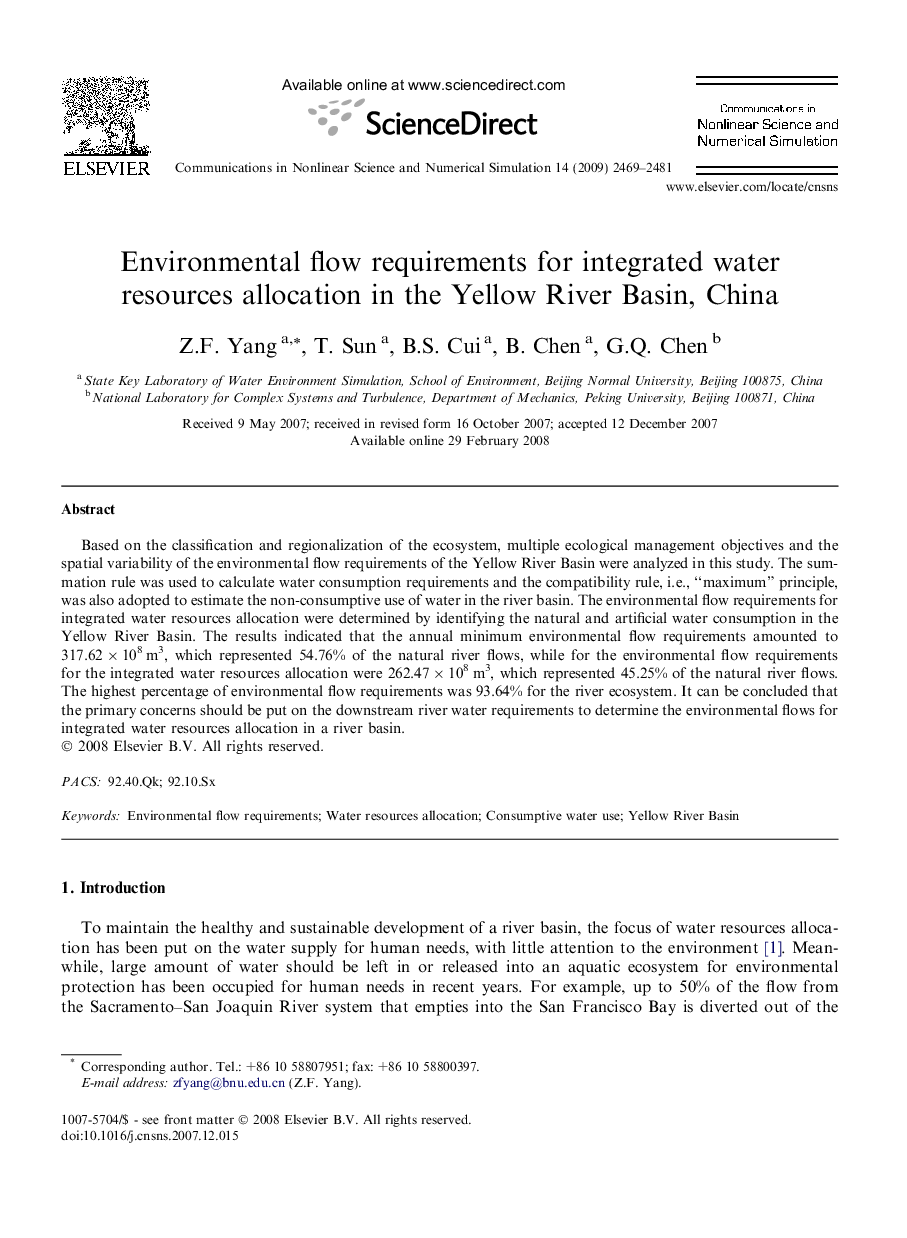| Article ID | Journal | Published Year | Pages | File Type |
|---|---|---|---|---|
| 767604 | Communications in Nonlinear Science and Numerical Simulation | 2009 | 13 Pages |
Based on the classification and regionalization of the ecosystem, multiple ecological management objectives and the spatial variability of the environmental flow requirements of the Yellow River Basin were analyzed in this study. The summation rule was used to calculate water consumption requirements and the compatibility rule, i.e., “maximum” principle, was also adopted to estimate the non-consumptive use of water in the river basin. The environmental flow requirements for integrated water resources allocation were determined by identifying the natural and artificial water consumption in the Yellow River Basin. The results indicated that the annual minimum environmental flow requirements amounted to 317.62 × 108 m3, which represented 54.76% of the natural river flows, while for the environmental flow requirements for the integrated water resources allocation were 262.47 × 108 m3, which represented 45.25% of the natural river flows. The highest percentage of environmental flow requirements was 93.64% for the river ecosystem. It can be concluded that the primary concerns should be put on the downstream river water requirements to determine the environmental flows for integrated water resources allocation in a river basin.
